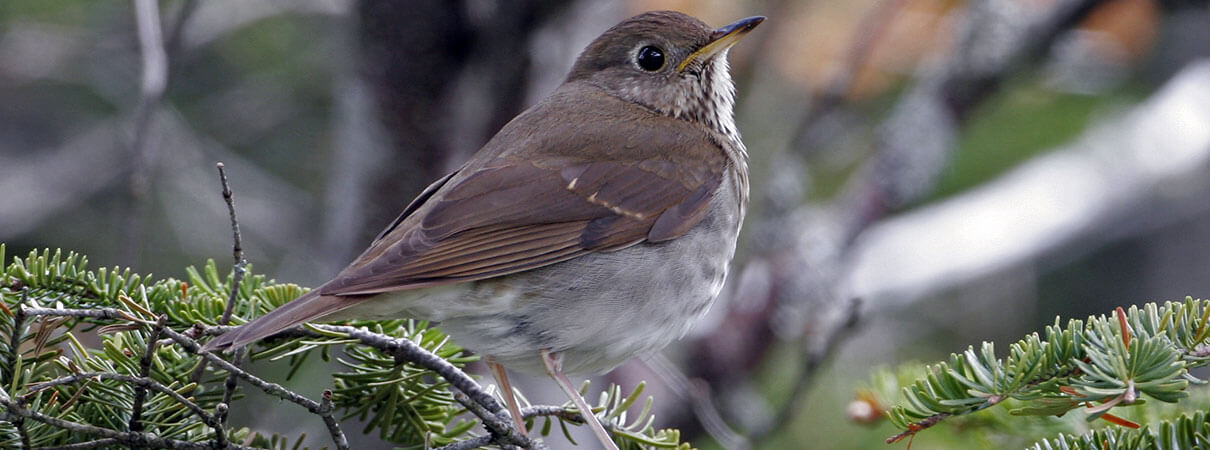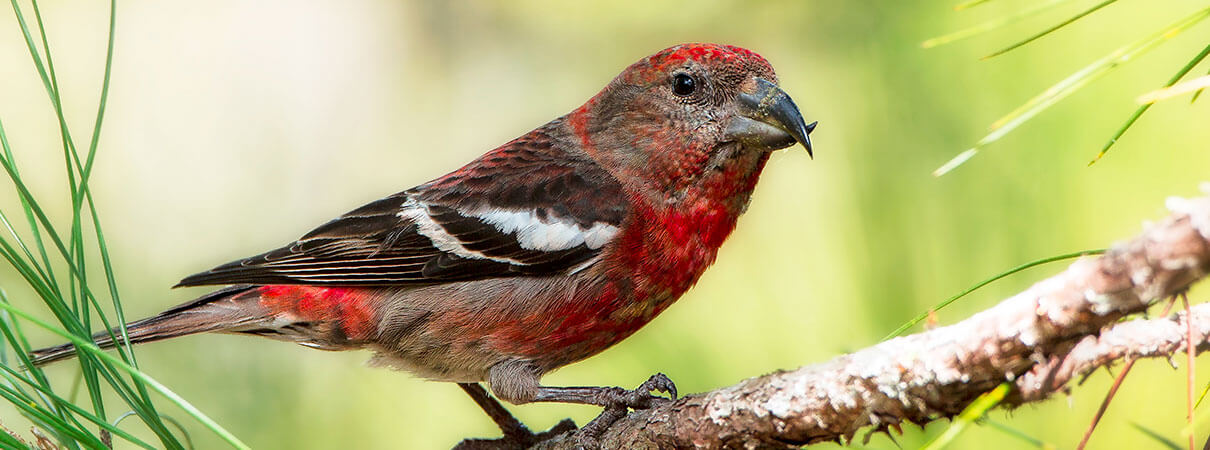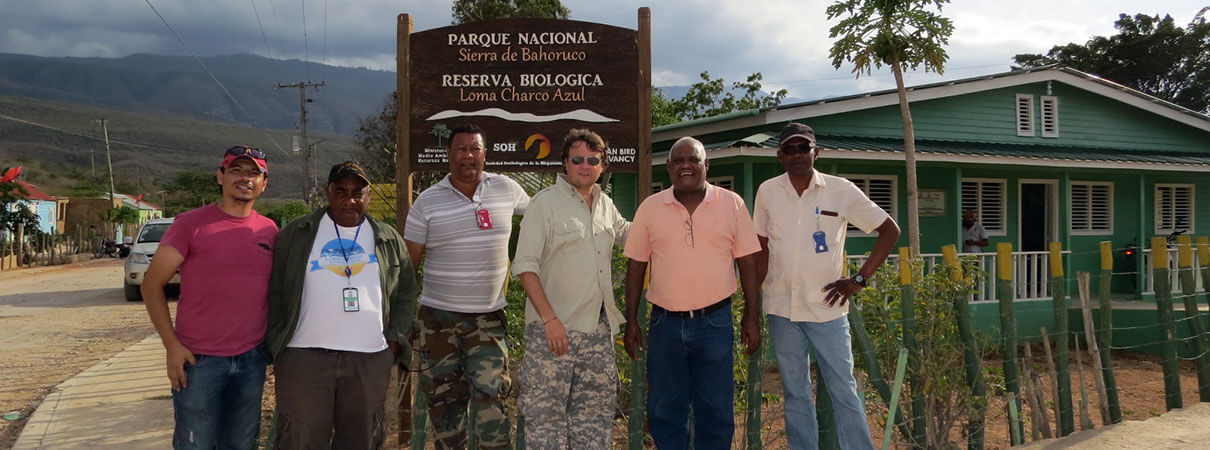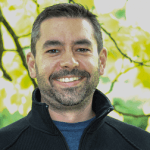ABC and Partners Protect Habitat in the Dominican Republic for Bicknell's Thrush
Here at ABC, we've been working closely with SOH Conservación and the Ministry of Environment and Natural Resources of the Dominican Republic to improve protection of Sierra de Bahoruco National Park and the neighboring Loma Charco Azul Biological Reserve. This is a special, globally important place that ABC lobbied to create and has been since working to protect.

More than 70 percent of all Bicknell's Thrush winter on the island of Hispaniola. Maintaining effective protections there is critical to the species' survival. Photo by Larry Master
The park and reserve, which are on the border with Haiti, include forest that provides habitat for the rare and threatened Bicknell's Thrush. They are also home to 28 of 31 bird species found only in the Dominican Republic and provide one of the few known nesting sites for the Black-capped Petrel.
Crisis for Bicknell's Thrush and Other Birds
Yet the protected areas are experiencing a human and environmental crisis. Until 2014, large tracts of forest were illegally converted into small subsistence agricultural plots, or cut down and baked into charcoal for use in Haiti and for export to international markets.

The Hispaniolan Crossbill is found only in the Dominican Republic, including in Sierra de Bahoruco National Park. Photo by Guillermo Armenteros
Our collaboration with SOH Conservación is decreasing the threats to the forest where Bicknell's Thrush spend their winters. With more than 70 percent of all Bicknell's Thrush wintering on the island of Hispaniola, maintaining effective protection instruments is key to this species' survival.
In the last two years, we have helped SOH and the Ministry to hire additional staff and provide them with training (in security and firefighting, for instance) and equipment (radios, boots, canteens). Beyond this, guard communications and patrol protocols have been improved, and two new guard houses have been constructed in areas that were heavily impacted by illegal activities.

Leaders in park conservation, shown at an initial meeting at Sierra de Bahoruco National Park's Visitor Center. Left to right: Cesár Abrill Caceres (Coordinator–SOH); Ramón Marrero Terrero (Provincial Director of Pedernales); Luis Peguero (Coordinator–Protected Areas); Jorge Brocca (Executive Director, SOH); Professor José Almonte (Chairman of the Planning Commission); and José Jimenez (former park administrator). Photo courtesy of SOH, May 2015
The efforts are making a difference. Guards have destroyed or confiscated more than 150 charcoal ovens and have installed boundary markers, and many people who were living illegally in the park have relocated outside the park.
Together, ABC and partners continue to look for solutions that protect habitat and support local livelihoods.
Editor's note: Funding for this work comes from the Neotropical Migratory Bird Conservation Act, administered by U.S. Fish and Wildlife Service, Critical Ecosystem Partnership Fund; private donors; and MARENA.
 Andrew Rothman is Director of ABC's Migratory Bird Program. He is a graduate of the University of Wisconsin-Stevens Point and holds degrees in Biology and Wildlife Management. Andrew is the founder of the Rainforest Biodiversity Group. A former field biologist for Point Reyes Bird Observatory, he also has a background in environmental education. Andrew was the Executive Director of the Sarapiqui Conservation Learning Center in Chilamate, Costa Rica, and spent three years as the Assistant Wildlife Educator and Naturalist at Horicon Marsh with the Wisconsin Department of Natural Resources.
Andrew Rothman is Director of ABC's Migratory Bird Program. He is a graduate of the University of Wisconsin-Stevens Point and holds degrees in Biology and Wildlife Management. Andrew is the founder of the Rainforest Biodiversity Group. A former field biologist for Point Reyes Bird Observatory, he also has a background in environmental education. Andrew was the Executive Director of the Sarapiqui Conservation Learning Center in Chilamate, Costa Rica, and spent three years as the Assistant Wildlife Educator and Naturalist at Horicon Marsh with the Wisconsin Department of Natural Resources.


















































